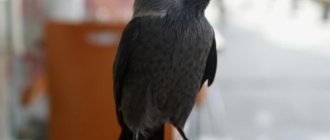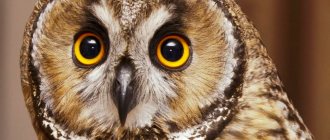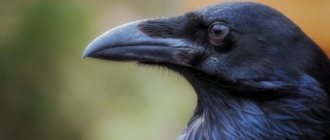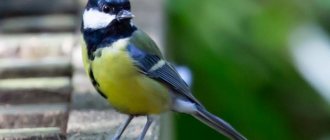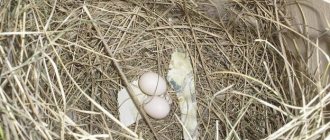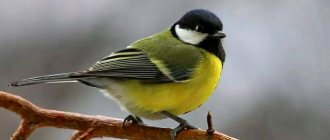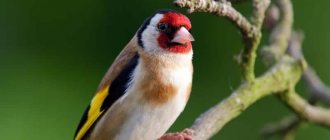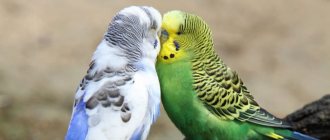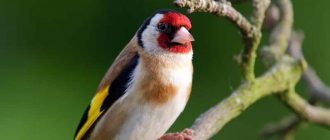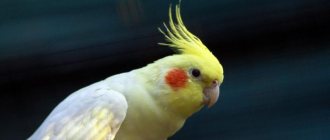Is it possible to keep a raven at home?
Keeping a raven at home is not an easy task. This idea has many advantages and disadvantages, which ones we will consider below.
Pros of keeping a raven:
- intelligent creation;
- can be tamed;
- quickly recognizes the person as his ally (but only one).
Disadvantages of keeping a raven:
- You cannot leave the bird for a long time, otherwise, out of boredom, it may damage something with its beak;
- you need to buy a raven only from a breeder who will provide all the necessary documents;
- These birds are not kept in cages; a spacious aviary or perch is needed;
- the bird must fly, play and walk every day;
- a raven flying around the apartment can break and destroy a lot of furniture;
- You can’t do without working with a raven;
- Poultry nutrition should be balanced, including rabbits, chickens, beef;
- over time, the bird will need a mate, if he lives with you alone, he will consider you his mate, automatically mistaking all other family members for enemies;
- The bird is not suitable for people with families, children, pets, or frequent travelers.
Raven at home
A raven is a friend, which you need to decide consciously whether to make or not. This is an independent bird that has certain needs. If they are not satisfied in the right way, not only the pet, but also its owner may suffer.
How does a raven’s behavior at home differ from its behavior in nature?
Of course, the main difference between domestic birds is their attachment to people. They are not afraid of them, but at the same time they do not like them too much.
Even the bird usually only tolerates its owner, who feeds it regularly, and may well peck if he makes a mistake. But still, a house raven may well go into the arms of even an unfamiliar person. A wild relative would never do this.
In addition, birds raised in the wild prefer to stay in flocks - this makes it easier to get food and protect themselves. But the family members are ardent individualists. Even once in the wild, they prefer not to get involved with their wild relatives.
What conditions does a raven need?
How long does a crow live at home? From fifteen years, but if ideal conditions are created, this period can be twice as long. By the way, males live twice as long as females.
For the bird to be happy, it must be in comfortable conditions.
Nest or cage
The cage is not suitable for keeping a raven at home; if this is allowed, the bird, spreading its wings, can seriously harm itself. In addition, the cramped space of the cage will depress the bird, which requires a lot of daily activity.
Raven Aviary
It is best to make an aviary for the bird, the appropriate size of which will be two by two meters. You can prepare the bait. But, for birds kept in such conditions, they will need at least an hour a day to walk around the room.
If you decide to make an enclosure, then you need to cover it with linoleum or cover it with plastic. Such a surface can be easily cleaned of dirt. It is better to secure the feeder and water bowl so that the bird does not turn them over. Additionally, inside the enclosure you need to install several strong poles on which the raven can sit.
Every day the raven should be allowed to fly freely around the apartment. To prevent the bird from flying away, keep the windows closed. You can shorten the crow's flight feathers a little, it will be able to rise into the air, but it will become difficult for it to fly long distances.
So that the raven can maintain its cleanliness, a container of water is placed for it. It wouldn't hurt to secure it to prevent accidental overturning. There the raven can splash around to his heart's content whenever he feels like it.
Once a month, the bird’s enclosure needs to be disinfected (non-aggressive compounds should be used for this purpose), and cleaned every week.
Hand crow
Bowls, drinking bowls
For birds, it is better to buy a water bowl and feeder that can be securely fixed in a stationary state.
The food and water in these containers must be changed every day. Crows like to hide some of their food. The owner must regularly check the enclosure for its remains, which must be thrown away to prevent the appearance of unpleasant odors.
The room where the aviary with the raven is located requires daily ventilation.
Bedding or perch?
Keeping a black crow at home will require organizing a roost inside the enclosure. A raven will sit on it and maybe sleep.
Take care of the material from which the perch will be made. It should not negatively affect the bird's feet.
Toys
To prevent the bird from getting bored during the day, you need to buy special toys and rattles for it.
Appearance of the bird
The crow's body is gray in color, while the tail, head and wings are completely black, with a metallic sheen. Externally, the constitution is a bit like a rook. The hoodie is distinguished from it by its rather dense build, wide blunt wings and a slightly downward beak. Its body weight usually does not exceed 700 g.
Juveniles have brown plumage, blue eyes, and a pink mouth.
These birds are considered omnivores, because they can feed on insects, frogs, chicks, fish, and plant foods. In addition, often the main food for many of them is food waste.
Ornithologists are still arguing about how long the hooded crow lives. Claims about their longevity have not yet been confirmed. In captivity, the life expectancy of birds is slightly longer and ranges from 15 to 20 years.
Diet of corvids
Feeding a raven
In order for the bird to live comfortably in captivity, the owner must feed it according to the diet suggested below. It replicates as closely as possible the diet of a bird in the wild, so it will be the best for maintaining its health.
Meat
At different times of the year, crows consume different amounts of meat. For this purpose, they catch animals that are sick or weakened.
What kind of meat can you give to a raven:
- beef;
- quail;
- veal;
- rabbits;
- chickens that are no more than a day old;
- mice and rats.
Mice for feeding crows
The last crows need to be supplied with wool and bones. This food is rich in microelements, starts digestion, and promotes the production of necessary enzymes.
In order to protect your pet, chicken meat should be given boiled. This does not add any benefit, but will protect the bird from various diseases. Occasionally you can treat the raven to elk or venison. It is better to avoid fatty pork or lamb.
It is better to give the bird fresh, possibly chilled, meat. It will be healthier than what has already been frozen.
Insects and more
Insects make up the lion's share of a crow's diet when they live in the wild. Therefore, at home you should include insects in your daily menu.
Locust
What insects can be offered to the bird:
- different types of cockroaches;
- butterfly caterpillars;
- locusts;
- ant eggs;
- beetles;
- dragonflies;
- spiders.
Occasionally, you can treat your pet to fatty maggots or mealyworms.
It is best to raise insects at home yourself, because buying them at a pet store is not a cheap pleasure.
If you catch insects yourself, it is better to freeze them before giving them to the bird. This way you can remove parasites. You just can’t store thawed specimens, they spoil very quickly.
Remember that giving the crow those cockroaches that can be caught in the apartment is strictly prohibited.
Caterpillar
Fish and seafood
You can give your pet fish occasionally, no more than once a week. It is better to treat the raven with low-fat varieties of fish.
Which fish is suitable:
- pike;
- zander;
- ruff;
- chum salmon;
- perch;
- tilapia;
- shrimps;
- squid;
- tadpoles.
Shrimp
The bird can be given fish caught in the seas or rivers. But, you need to remember that sea varieties contain a large amount of mercury, which is unsafe. Before serving, the fish must be frozen; after this procedure, there is no need to gut the fish.
Eggs
The bird can be treated to raw quail eggs. It is better to avoid chicken ones, they are less healthy and may contain pathogens.
Small crows can be given one quail egg every two days, for large crows you can give one egg a day.
Skim cheese
This fermented milk product must be included in the poultry diet. It contains vitamins and valuable microelements. If you buy cottage cheese, choose the low-fat variety.
An adult crow can be given from a teaspoon to a tablespoon of cottage cheese per day (depending on the size of the individual).
Skim cheese
Berries, fruits and vegetables
During the season when vegetables and fruits ripen, they must be part of the raven's daily menu. Your pet will especially appreciate wild berries, which he is accustomed to in the wild.
What fruits and vegetables can you give:
- melons and watermelons;
- strawberries and cherries;
- peaches and raspberries;
- dogwood and cherry;
- gooseberries and grapes.
Poultry carrots must be given grated, otherwise they will not be digested. There is no need to treat your pet to citrus fruits; they are unusual for him and can cause allergies.
Potatoes, tomatoes and mushrooms do not need to be given to the bird often. They are more likely to do harm than good.
Cherries
Nuts and seeds
Nuts have a high level of fat content, they should be given in moderation, one at a time (not every day). You can offer the crow pine nuts, almonds, coconut, brazil, cashews.
As for seeds, the crow will be pleased with sunflower and pumpkin seeds, as well as spruce and pine cones.
Porridge and sprouts (cereals)
To diversify a bird's diet, you cannot do without including porridge in its diet. These dishes are prepared from brown rice, millet, and buckwheat.
To prepare dinner, crow and cereals need to be steamed; it is better to do this overnight. This way the porridge will retain all the beneficial microelements.
In raw form, you can give the bird milk millet, wheat and oats. Grains that have already sprouted should be offered with caution; they can provoke a hormonal surge.
Brown rice
Green parts of plants
Not every bird will eat this food, but you can offer it. Dandelion leaves, branches of fruit trees (young), and needles are suitable for this purpose. You can freeze or scald nettles with boiling water and give them to the crow.
In addition, you can make small bouquets of clover and woodlice and hang them inside the cage. You should not give parsley or dill to a crow; they contain too many essential oils.
Dry food
Dry cat and dog food is not suitable for feeding crows at home. You can buy special mixtures for insectivorous birds. The main thing is to ensure that birds eating dry food have free access to a sufficient amount of water.
Drink
Filtered water
For drinking, you can pour filtered or purchased water into the crow; spring and well water are suitable. It is better to discard tap water that has not passed the filter.
To prevent the bird from soaking its toys in the water bowl, you need to place it and a nipple drinker in the enclosure.
Prohibited Products
Numerous reviews from raven owners note that at home birds should be fed strictly in accordance with the rules.
You should not give the bird:
- alcoholic drinks;
- fried and salted;
- sweet;
- fat;
- bread and pasta;
- dairy;
- canned foods;
- semi-finished products and sausages;
- juices from the store;
- sweet carbonated water, tea, coffee.
Bread
If you treat a raven with products from this list, even periodically, its health can be seriously affected.
What does a crow or magpie woodpecker eat in winter?
Try to diversify your bird's diet as much as possible. Imagine what they eat in nature (just not in garbage dumps - it’s better not to think about it..). The raven’s natural menu is very diverse: berries, fruits, insects, fish and crustaceans from small bodies of water, mouse-like rodents, moles, small birds, dead animals (the remains of someone’s hunting activity, washed up on the shore of a body of water, living creatures)…
Crows are omnivores. They can eat food from the human table, such as Snickers, caramels, fried chicken, and salted roach. But please take note that if a bird eats something and likes it, this does not mean that it can eat it! The bird simply doesn’t know about it! Tasty - but harmful. Try to control yourself and not spoil your feathered friends with roasts and sweets! Their health and life expectancy greatly depend on this.
What not to give to a crow:
-SALT! and salty foods (poison for all birds) - fatty foods (fat cheese, cottage cheese, fatty meat) - fried foods - sausages (as well as ham, bacon, lard, etc.) - earthworms and snails (high risk infected birds with helminths) - canned food (for people and animals) - butter, margarine - beer and other alcoholic drinks - various sodas and citrus juices - citrus fruits - salty and sweet crackers, chips, all sorts of snacks!
Most of the listed products have a detrimental effect on the bird’s liver, which affects the condition of the bird’s plumage, bones, and joints.
What can and should be given to a crow:
- low-fat meat products (ideally mice, maybe day-old chicks) If all this is not available, chicken necks, hearts, heads, various soup sets “for nibbling” are suitable - by the way, they grind off the beak very well.
-fish (preferably raw river fish, whole but without intestines, and if there is a fear of infection with helminths, it is better to boil it) In general, birds also respect sea fish)
-for pampering: shrimp (they make the droppings turn a “scary” orange color - don’t be alarmed)
-fruits, berries, melons. If you have your own garden, offer the crow everything: from currants and strawberries to cucumbers and watermelons. Just don’t overuse it with potatoes. And, of course, there is no need to give products treated with insecticides if the bird is free-grazing - it’s better to forget about poisons once and for all (rat ones also belong to them)
-boiled cereals (buckwheat, oatmeal, millet...)
- boiled and raw eggs, but not too much
- dry food for cats and dogs of GOOD QUALITY (Hills, Royal Canin...), but they should make up no more than 30% of the bird’s total diet
Optional entertainment products:
- bagels, drying
-large brain bones (fresh, not from soup). The raven will also be very happy with the bones, boiled without salt, and the leftovers from chicken boiled without salt.
-pumpkin and sunflower seeds
- nuts in small quantities (they are very fatty - too much is harmful). Make sure that they are not salted or fried.
And now, how does all this really look on my raven: (this is a personal example of how it is possible, but not necessary. You and your bird may have other preferences. Combine, give separately, swap places - at your discretion. The main thing is all should be in moderation).
Take a liter mayonnaise bucket and fill it halfway with boiled buckwheat.
Feeding
Feeding should be given in moderation so as not to harm the pet. It is best to give vitamins strictly as prescribed by your veterinarian.
Sepia
Is a source of calcium. This product can be attached to the mesh of the aviary, then the bird can periodically peck at it. If she ignores sepia, you can grind it into powder and add a teaspoon to your food.
Spirulina, kelp
These substances improve the bird's plumage and strengthen the immune system. Algae is added to other food and given from one third to one fourth teaspoon per day.
Kelp
Clay
Clay acts as a prebiotic and sorbent; birds can be given its blue and white varieties.
Eggshell
When answering the question of what to feed crows at home, we must not forget about eggshells, which contain valuable calcium carbonate. The shell can be ground in a coffee grinder or given as a whole along with the egg. For a small individual, you need to offer 0.1 teaspoon of shell daily.
Gammarus, daphnia
These are dried crustaceans that can be purchased at a pet store. They can only be given to the bird as a reward during training.
Pollen
Before including it in the diet on an ongoing basis, you need to give your pet a small amount of pollen so that it does not cause allergies. If the bird tolerates the new product well, it can be added to the mash at the rate of 7 lumps for small birds and 10-2 for large ones.
Pollen
Pollen is given for three months, then a break is taken for the same period.
Honey
You can give honey twice a week, in an amount not exceeding one teaspoon.
Chalk
As a source of calcium and phosphorus, chalk is offered to birds daily. It can be placed between the rods. The main thing is to buy special food species.
Milk thistle
Given to support liver function. Milk thistle is bought in seeds, which are crushed and added to food every day, a teaspoon.
Bone flour
This type of feeding is used as a source of phosphorus and calcium. It can be added to the mash in an amount of no more than half a teaspoon per day.
Bone flour
Sulfur
Sulfur should be given during the period when the bird begins to actively moult. It is added to food in small quantities for two weeks, once a day.
Yeast
This is a source of B vitamins. It is better to buy them at the pharmacy, but give them only after the recommendation of a veterinarian, otherwise there is a risk of developing mycoses.
Gastroliths
Gastroliths are small pebbles used to abrade the food that has entered the bird’s stomach. For this purpose, a bowl with a small fraction of pebbles is placed in the enclosure. The birds themselves will understand what to do with it.
Place
It is better not to keep a gray crow for neat people - this bird is noisy and dirty. Even when kept in a cage, dirt will spread far beyond its boundaries. Her droppings are liquid, which also adds problems, and the smell is not the most pleasant. But if you are ready to frequently clean and ventilate the room and you are not afraid of difficulties, then here are some tips:
if possible, build an aviary - this is the best home for birds in captivity;
You can keep a crow in a cage or even in a box if it is sufficiently socialized, and it can be released into the room;
equip your place of residence with a thick stick to perch;
When flying freely around the room, do not forget that the crow eats almost everything and often likes to make stashes; they can be made not only from food, but also from various little things they like, such as keys, coins, pens and other things.
It sat with me for a month (in the closet, there was nowhere else to put it). At first he didn’t eat, he just opened his beak. She named it Diego. He really wanted to fly; the closet was dark and cramped. But he did not shout, he sat quietly. We learned to fly in the basement. They also rolled a ball and batteries there. So they burned me and yelled at me to throw him out. The next day I took it to a fenced area - it would fly away, just like that. He did not fly away, but found a hole in the mesh fence and climbed out. While I ran around the fence, he went somewhere into the bushes. Did not find. He knows how to fly and find food for himself - he won’t go to waste, I thought and left. And at night it started to rain heavily, I didn’t sleep, I kept wondering how he was doing, I fell asleep only in the morning. The next day I couldn’t find it either. Every other day they knock in the morning - isn’t your crow in the flowerbed? I go out and sit. It’s shabby and scary—the plumage has begun to change. He saw me and ran towards me. Yells. I attacked the food. So he remained in the garden. He played like a dog - he took away twigs or, on the contrary, brought them. He caught a slug and brought it to me - he put it down and looked to see what I wasn’t eating? Only when I moved further away from the slug did he pick it up and take it to the drinking bowl, where he gobbled it up himself. In the fall I realized that he was a boy - he brought another crow and twirled in front of it, fluffed up, flapped his wings and generally showed off in every way. But then that crow disappeared somewhere. I never saw him with anyone else as a couple. Usually the three of them fly with the older crows, sometimes there are more of them, they flock to food, but so that only he is a pair with another crow - I have not seen this. That year, the old garden crows also had a chick, but I didn’t take it - there was nowhere else to go, and I thought that the parent crows would take care of it themselves. I shouldn’t have taken it, someone killed him.(
There is no place on our planet where crows are not found. There is even a joke: if there is a nuclear war, only rats, cockroaches and crows will survive. This is the most adaptable bird species. There is a problem with populations of this species growing too quickly. The solution is to shoot crows.
How to tame a raven?
If you don't know how to tame a crow at home, check out the following tips.
Raven training
Features of training and accustoming crows:
- It is best to take a crow between two and three weeks old. Young individuals are better tamed and amenable to training. Males are very active, but can be aggressive. Females are attached to their owner and are calm.
- You need to stay with the chick for about a month and a half, feed it, and clean the enclosure.
- If you give your bird at least three hours a day, it will quickly recognize you as a friend.
- When the chick learns to stand on its legs, they are put on fetters. When he gets used to them, you can fasten a strap to them and go for walks in the fresh air.
- Every day you can train for up to two to three hours.
Crows believe that they can only have one owner. If all family members take an equal part in raising the pet, he will trust everyone equally.
Walk for the Raven
Description, habitat and habits
The gray crow is the most common bird species in Russia. This is a large bird, up to 45 cm in length (body without tail) with a large massive beak. She has no equal in terms of intelligence and ability to adapt.
We have long been accustomed to its proximity and can perfectly identify it by its cry and appearance. Early in the morning on your way to work, you probably hear the frightening songs of crows and watch them circle in large flocks above your heads. And passers-by periodically say “black raven, I’m not yours.”
The crow feels great living next to us, which we cannot say about her. Birds cause significant damage to agriculture, namely plantings and animal farms.
Birds also damage hunting grounds. The gray crow is absolutely omnivorous and prone to predation. He especially likes to destroy the nests of ducks, thereby reducing the number of hunters’ favorite game.
Usually, the crow feeds in landfills within the city. But if we talk about large cities (for example, Moscow), then this problem is solved by the presence of bars covering garbage cans. It is impossible to get to the garbage through them. Under this condition, the crow still lives in the city, and feeds in landfills outside the city. And, flying back to the city, he brings the infection with him. It's very unsanitary.
The crow is called the "winged wolf", displacing noble bird species such as the duck.
Prevention and treatment of diseases in crows
Ornithologists deal with the health of birds; unfortunately, it is not easy to find an experienced specialist in this profile. Therefore, crow owners, if any problems arise, usually turn to a regular veterinarian.
It is better to take a pet from a breeder to be sure of the health of your pet and the absence of infectious pathologies.
Crows can suffer from reovirus and some other diseases. If you notice that the bird has become lethargic and refuses food, be sure to show it to a specialist.
The current state of affairs with crow hunting
On the territory of our country, this type of pest is subject to year-round regulation, namely shooting for sanitary purposes. Amateur hunters with a license and small-caliber weapons can safely kill a crow without fear of being charged with cruelty to animals. The only thing that is prohibited is shooting in the city.
Note! The crow is a cunning bird, and hunting it is not easy. After a day of hunting, crows behave cautiously. After 1-2 weeks, they become bold again and begin to become active in the area where the shooting took place.
The Russian Ministry of Natural Resources gives a certain quota - permission to shoot crows during the hunting period. In the off-season, specialized teams are created that shoot crows at different points. Shooting takes place all year round.
In the spring, at the end of April, hunters shoot nests in the areas, which significantly reduces the population.
There are clubs that specialize specifically in crow shooting. Competitions are held twice a year. The area where the population is strongest is selected. After this, coordination takes place with district authorities and the police. Inter-district game managers who are actively involved in instructing and monitoring this event are notified. The competition itself lasts approximately two hours. All participants make monetary contributions and are divided into teams (usually 3 people), and a challenge cup is played. During the hunt, decoys and compositions of dummies of eagle owls and crows are used. At the end of the event, the number of downed birds is counted, which are then disposed of.
>Hunting a crow with a dog
This species of bird is rarely hunted with a dog. They are used to bring back a crow that has already been killed.
Answers to frequently asked questions about keeping ravens at home
In this section you will find answers to popular questions about keeping crows at home.
Is the raven a carrier of dangerous diseases?
Crow on a Dumpster
Crows can carry dangerous diseases if they live outdoors and feed on waste from landfills. If you are adopting a chick from a specialized pet, there is no need to worry. The main thing is to periodically give the bird anthelmintic drugs.
What to do if a raven shows signs of obesity?
In this case, you need to reduce the amount of fatty foods in the bird’s diet and increase the pet’s activity. To do this, you can let him fly more often, add more plant foods to his diet.
Is it possible to teach a raven to speak?
If you have one raven, you can teach him some words that contain the letter “r”.
How to achieve breeding of crows at home?
It is difficult to ensure that a raven finds a mate in captivity. These birds are quite picky in everything that concerns a possible partner.
Pair of ravens
How long does a crow live at home?
On average, from twenty to thirty years, depending on the conditions of detention.
Nutrition
They are not picky about food. Considering that crows living in the wild feed on carrion, it is necessary to include meat in the diet of poultry. You can give boiled chicken, chicken heads and necks, after chopping them, beef. In addition to meat, you can:
- apples;
- eggs;
- carrot;
- cereal porridge.
You should not give crows:
- pork;
- potato;
- tomatoes;
- salty food.
If you have a dog at home, you can give him dog food, and there should also be constant access to water.
Reviews from owners about keeping a raven at home
Crows do not live in every home. Despite the fact that the raven is not the most popular bird to keep at home, you can find reviews from the owners of this bird on the Internet.
Owner reviews about the crow:
- males are overly aggressive;
- they scream very loudly whenever they feel like it;
- females are calm and friendly; it is better to keep them in captivity;
- require careful selection of diet.
Keeping a raven at home is not an easy task. The bird has a freedom-loving and capricious character, it needs to be fed in a special way, and comfortable living conditions are important for it. But, if you win the love of this bird, it will recognize you as an equal and will enjoy spending time in your company.
Main characteristics
The raven is a large bird of the corvid family. Body length from 50 to 75 cm, weight up to 1500 g. The color is predominantly black, the beak is sharp and massive. The character is bold, but at the same time cautious.
These birds are smart and quick-witted, and in some situations crows show extraordinary resourcefulness and ingenuity. They quickly get used to new living conditions, and if you bring a crow into the house from the street, then after some time it can become an excellent obedient friend.
The distribution area is mainly in the European part of Russia and Western Siberia. Birds of the corvid order prefer to live in forests, steppes, tundra and on the sea coast. Birds nest in pairs and small groups.
Scientists suggest that the raven has a keen intellect and is smarter than even a dog and a wolf. If you take a small chick into your home, you can quickly tame it and teach it some commands. Training is carried out in the same way as for birds of prey with the use of positive reinforcements.
In addition, with a lot of effort from the owner, a small black chick can learn to talk. Raven is able to reproduce sentences and words with the required speed and intonation.
As the bird grows up, it begins to show its character more and more. And at a certain moment he may become bored with a person, and if given the right opportunity, he can fly away into freedom.
Feeding
There are usually no special problems with nutrition, since the gray crow is an omnivorous bird. The main thing when creating a diet is variety. You can give raw and boiled meat, chicken giblets, eggs, various cereals, fruits and vegetables, fish, bread.
In order for your pet to grow healthy and active, it is necessary to provide it with mineral supplements and vitamins. You can buy them at any pet store. The feeding is placed in a separate feeder, then the bird can independently choose the amount it needs. You should be prepared for the fact that you will have to clean the aviary quite often, because the hooded crow is a very sloppy bird.
Chicks eat almost the same foods as adults. Usually they are fed a special mash, which consists of meat, finely chopped vegetables and porridge, taken in equal parts. Sometimes they should be given low-fat cottage cheese. At first, the chicks are fed by hand. This allows you to quickly establish a trusting relationship between the bird and the person. They are taught to take food from a bowl gradually.
There are a number of foods that should not be given to these birds. These include fatty meats, salty, spicy and fried foods. It is very important that in the enclosure where the domestic gray crow lives there is always clean water for drinking.
Character and behavior
According to ornithologists, crows are one of the smartest birds. In the wild, they know how to build strategies that help them get food. These birds are not without ingenuity and cunning. They are also very vindictive. Crows are cautious. Thus, some representatives of this family do not sit on the roadway when the prohibitory traffic light sign is on.
Before you keep a raven at home, you should get to know these birds better and learn about how they behave in different situations.
Walks
Surprisingly, crows, despite their restless disposition, easily learn and get used to a leash. Of course, this is not a dog or a cat, so some precautions must be taken during such walks: • When training a crow, your hand should be in a special leather glove. • It is necessary to select equipment for walking very carefully so that the bird does not get injured later. • On walks, make sure that her relatives are not nearby. Large concentrations of wild crows may make your pet want to join in their free-ranging lifestyle. There are times when a crow attacks other birds, trying to protect its territory. This can also result in tragedy and trauma for her. If it is not possible to walk with the crow in the fresh air, then the owner of this feathered beauty must provide it with a sufficient amount of ultraviolet rays in the house. The ideal option in this situation is sunbathing. It is necessary to take into account the fact that ultraviolet radiation does not pass through glass.
To date, scientists have not come to a clear answer to the question of how long the hooded crow lives. It is only known that in captivity this bird can live up to 18-20 years with proper care. A domestic crow will require a lot of patience from its owner, but in the end it will become a devoted and intelligent feathered friend for him.
